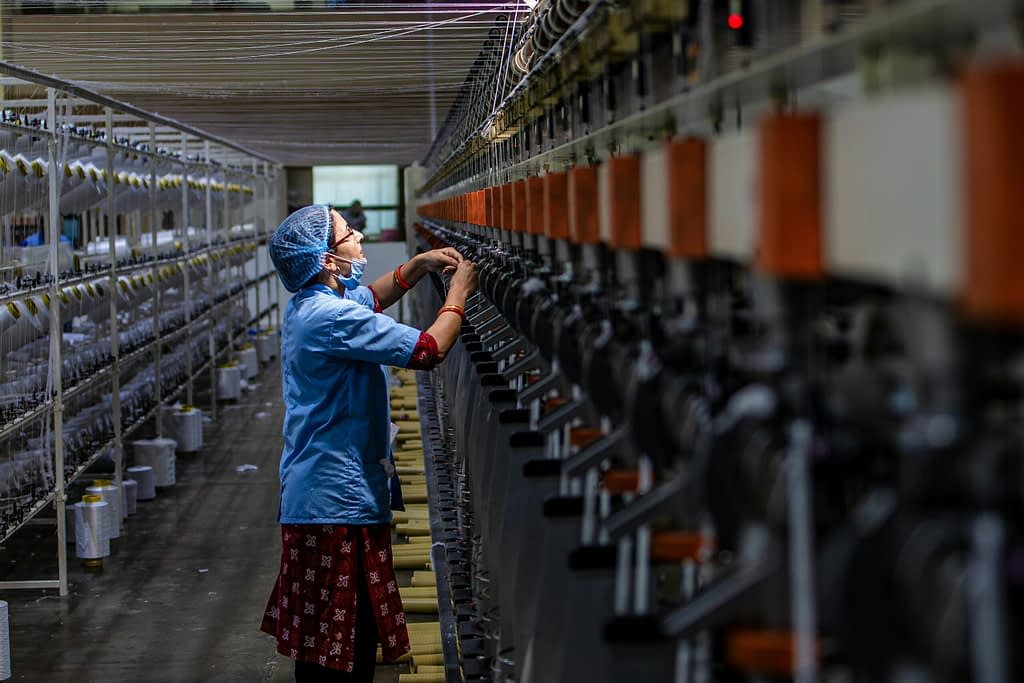While Donald Trump promises to bring American factories back home, Chinese President Xi Jinping is already preparing his counterstrategy. Beijing is developing a revolutionary new version of its flagship manufacturing strategy in 2025, designed to maintain China’s position as a global manufacturing powerhouse despite growing trade pressures from the West. The new plan will focus primarily on cutting-edge technologies including chip manufacturing and could reshape global economic balance over the next decade.
Successor to Legendary “Made in China 2025” Plan Takes Shape
Chinese government officials are currently developing a future iteration of Xi Jinping’s flagship “Made in China 2025” program. The new manufacturing strategy will focus on key technologies over the next ten years, particularly semiconductor manufacturing equipment. Interestingly, the new plan likely won’t carry a similar name to avoid criticism from Western countries.
The original “Made in China 2025” initiative from 2015 has proven remarkably successful. According to research by Bloomberg Economics and Bloomberg Intelligence, China has achieved global leadership in five of thirteen tracked key technologies and is rapidly catching up in seven other areas.
Manufacturing Remains Priority Despite US Rebalancing Demands
Policy strategists simultaneously preparing Beijing’s next Five-Year Plan starting in 2026 want to maintain manufacturing’s share of gross domestic product at stable levels over medium to long-term perspectives. This decision underscores how difficult it will be to achieve the Chinese economic rebalancing sought by the United States.
Key economic indicators of current Chinese economy:
- Consumption comprises only 40% of Chinese GDP (50-70% in developed economies)
- Investment including manufacturing sector represents another 40% of the economy
- This ratio is roughly twice as high as in the US and historically record-breaking globally
Technological Self-Reliance as Response to Western Sanctions
Beijing emphasizes semiconductor manufacturing equipment after years of US-led restrictions on importing advanced chipmaking tools from Dutch giant ASML Holding, Japan’s Tokyo Electron, and American suppliers including Applied Materials. This equipment, particularly ASML’s best-in-class lithography tools that can cost hundreds of millions of dollars each, is essential for manufacturing cutting-edge semiconductors used in artificial intelligence development.
Current challenges facing China’s technology sector:
- Lack of access to best manufacturing tools remains significant barrier
- Trump administration plans further tightening of export controls
- Domestic tool industry becomes national security priority
- Chinese companies utilize foreign equipment purchased before sanctions implementation
New Productive Forces as Future of Chinese Economy
Xi Jinping has recently increased calls for fostering “new productive forces” including electric vehicles, solar panels, and batteries. Promoting new productive forces is now the focus of research by government agencies developing the next Five-Year Plan.
Research work aims to break through “bottlenecks” constraining China’s development, with multiple departments emphasizing the importance of breakthroughs in core technologies such as semiconductors and new energy materials.
Geopolitical Implications and Future Trade Relations
US Treasury Secretary Scott Bessent hinted at possible cooperation: “We could conceivably do this together away from strategic materials. We need more manufacturing, they need more consumption.” However, Chinese leaders speak of needing to boost consumption while trying to avoid deflationary spirals and offset anticipated export drops from Trump’s tariffs.
Current discussions in Beijing indicate China plans to largely stick with an overall strategy criticized by the US and Europe for fueling trade imbalances. Trump previously raised tariffs on China to 145% in April before lowering them to approximately 40% following Geneva talks.
Technological Battle for Future of Global Economy
China’s preparation of a new manufacturing strategy in 2025 represents a clear signal that Beijing won’t back down in the technological battle with the West. While the US pursues “strategic decoupling” and greater self-reliance, China continues building its position as a global manufacturing powerhouse with emphasis on cutting-edge technologies. The outcome of this competition will have fundamental impact on the global economy for decades to come.




